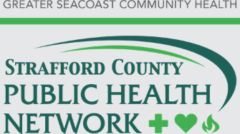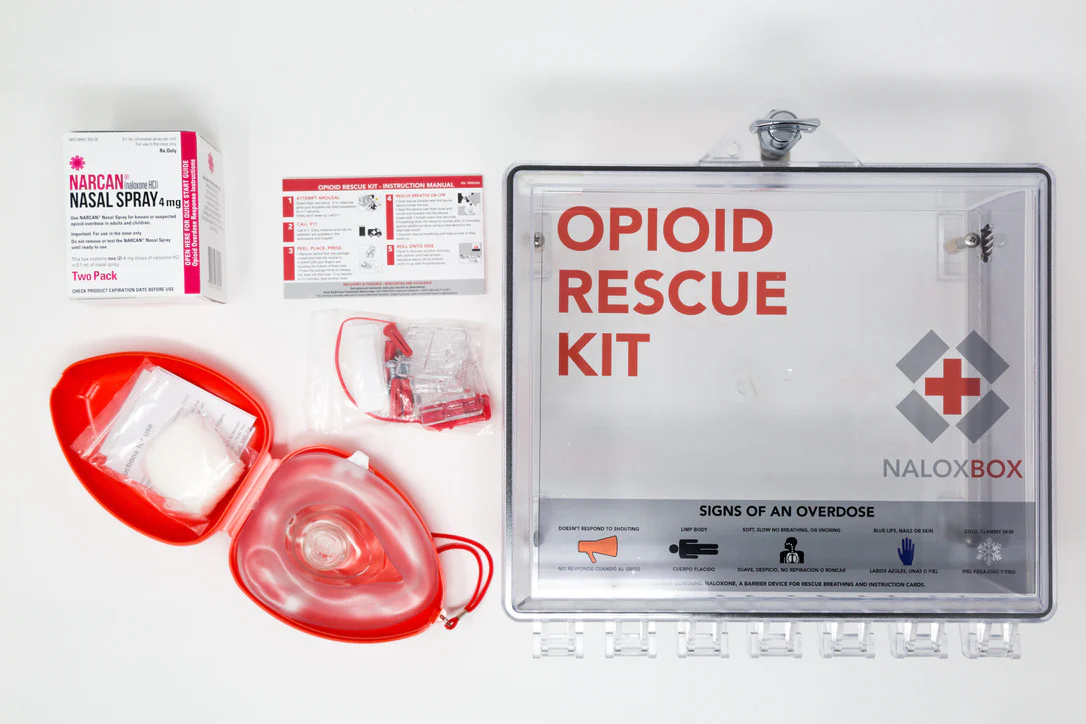Opioids are a class of drugs that work in the brain in many ways. Opioids are legally prescribed for pain relief and work well for pain control when used as prescribed. However, some opioids are misused or abused by people. This includes synthetic, or man-made drugs, sold illegally, such as heroin and synthetic fentanyl. In some places, heroin is less expensive and easier to get than prescription opioids, so some people will switch to heroin use.
Common prescription opioids:
-
- Hydrocodone (Vicodin®)
- Oxycodone (OxyContin®, Percocet®)
- Oxymorphone (Opana®)
- Morphine (Kadian®, Avinza®)
- Codeine
- Fentanyl
- Methadone
- Hydromorphone
Key Concepts:
-
- In the brain, opioids attach to nerves that block pain signals from the body and open the brains “reward” system. Once open, dopamine (a chemical messenger) is released throughout the body and gives the feeling of pleasure.
- The most common reason people use substances is for the brain “reward”.
- Other reasons why people use or misuse substances are related to their environment, mental health, and their family genes.
- Using opioids over time can cause your brain to change, making it hard to feel pleasure from normally rewarding or enjoyable activities.
- Brain changes that come from substance use or misuse can cause cravings, tolerance, addiction, and dependence to opioids.
- Opioid tolerance is the need to take higher and higher doses to feel the same effect.
- Physical dependence happens when people feel withdrawal symptoms (jittery, anxious, muscle cramps, diarrhea, etc.) when not taking the opioid routinely.
- Opioids can decrease the brain’s ability to stay awake, breathe well, and have a normal blood pressure.
Adapted from the following source: ncbi.nlm.nih.gov/pmc/articles/PMC4269138/
Signs and Symptoms of Opioid Use
It is important for people to be able to recognize when someone is using opioids so that they can respond if needed. Below are some of the most common signs and symptoms of opioid use:
Key Concepts:
-
- In the short term, opioids can relieve pain caused by injuries or chronic conditions and make people feel relaxed and happy or “euphoric”. However, opioids can also have harmful effects, including:
-
-
-
- Drowsiness
- Confusion
- Nausea
- Constipation
- Slowed breathing
-
-
-
- Opioid misuse can cause slowed breathing, which can cause hypoxia, a condition that results when too little oxygen reaches the brain.
- Hypoxia can have short and long-term effects, including coma, permanent brain damage, or death.
- If someone is “high” or under the influence of drugs like heroin, or opioids/pills, they may show some of the following signs and symptoms:
-
-
-
- Pupils will contract and appear small (pupils look like points of a pin)
- Muscles are slack and droopy
- Scratch a lot due to itchy skin
- Speech may be slurred
- They might “nod out” (a slang term - to become sluggish, causing people to fade in and out of consciousness)
- They might be out of it, but they will respond to outside stimuli (pain, etc.)
-
-
Adapted from the following sources: https://nida.nih.gov/publications/drugfacts/prescription-opioids; harmreduction.org/issues/overdose-prevention/overview/overdose-basics/recognizing-opioid-overdose
Opioid Withdrawal Symptoms
Opioids can cause physical dependence, which means that the person relies on the drug to prevent withdrawal symptoms. How long it takes to become physically dependent on opioids varies with each person. When the person stops taking the drugs, the body needs time to recover, causing withdrawal symptoms. Withdrawal can occur any time long-term use is stopped or cut back.
How severe and how long a person suffers from withdrawal symptoms also varies from person to person. It depends on how long the person has been using, how long it takes their body to process and get rid of the drug, and their overall health status. Opioid withdrawal symptoms usually start within 12 hours after a missed dose, peak at 36–72 hours, and gradually taper off over the following 4–7 days. With some opioids such as methadone and fentanyl, withdrawal may be refractory, meaning it lasts longer than the typical 4-7 days. Withdrawal from these drugs could last up to 10 days or more.
| Opioid Withdrawal Symptoms | |
| Aches and Pain | Irritability |
| Muscle Spasms/Twitching | Insomnia |
| Tension | Hot Flashes/Chills |
| Tremors | Heart Pounding |
| Abdominal Cramps | Lacrimation (Teary Eyes) |
| Nausea | Sweating |
| Vomiting | Rhinorrhea (Runny Nose) |
| Diarrhea | Dilated Pupils |
| Anxiety | Yawning |
| Restlessness | Gooseflesh (Goosebumps) |
Recognizing an Opioid Overdose
It is important for individuals to understand what an opioid overdose is and how to recognize the signs of an overdose so that they can act quickly. Below is some information as well as some of the most common signs and symptoms of opioid overdose.
Overdose (OD) happens when a deadly amount of a drug or combination of drugs overwhelms the body. Opioid overdoses happen when there are so many opioids, or a combination of opioids and other drugs in the body that a person does not respond to stimulation (shaking, shouting, etc.) or is not breathing well, if at all.
| Signs and Symptoms of an Opioid Overdose | |
| Loss of consciousness | Awake, but unable to talk |
| Body is very limp and/or unresponsive to outside stimulus | Breathing is very slow, shallow, erratic, or has stopped |
| For lighter skinned people, the skin tone turns bluish purple | Fingernails and lips turn blue or purplish black |
| For darker skinned people, skin tone turns grayish or ashen | Choking sounds, or a snore-like gurgling noise |
| Face is very pale or clammy | Vomiting |
| Skin feels cold and clammy | Pupils are tiny |
| Pulse (heartbeat) is slow, erratic, or not there at all | Signs of substance use, such as paraphernalia |
Adapted from the following sources: narcan.com/patients/what-is-an-opioid-overdose-emergency; harmreduction.org/issues/overdose-prevention/overview/overdose-basics/recognizing-opioid-overdose/
Responding to an Opioid Overdose
Naloxone and How it Works
Naloxone is a medicine that quickly stops an opioid overdose. This drug should be given to any person who shows signs of an opioid overdose, or when an overdose is suspected. Naloxone comes in two forms (nasal spray and a medicine to inject into a vein or muscle).
 SCPHN provides nasal naloxone in the form of Narcan. Narcan Nasal Spray is a brand of nasal naloxone that is used to reverse an opioid overdose. Narcan is easy & safe to use, & is available without a prescription through local pharmacies & community-programs. You can find more information on Narcan here. Below is an image outlining steps to responding to an overdose. Directions on administering Narcan can be found in the box with each dose & can be found here.
SCPHN provides nasal naloxone in the form of Narcan. Narcan Nasal Spray is a brand of nasal naloxone that is used to reverse an opioid overdose. Narcan is easy & safe to use, & is available without a prescription through local pharmacies & community-programs. You can find more information on Narcan here. Below is an image outlining steps to responding to an overdose. Directions on administering Narcan can be found in the box with each dose & can be found here.
| STEP 1:
Identify person has overdosed and is unresponsive |
 |
(See "Recognizing an Opioid Overdose") |
| STEP 2:
Try to wake person |
 |
Use verbal and/or physical stimulation:
If person responds:
If person does not respond:
|
| STEP 3:
Call 911 |
 |
If you think person has overdosed:
|
| STEP 4:
Give Naloxone |
 |
Nasal Naloxone:
*Wait 2-3 minutes between doses of Naloxone before administering another |
| STEP 5:
Start Rescue Breathing (if person is unable to breath on their own) |
 |
See “Rescue Breathing” |
| STEP 6:
Do not leave person |
 |
If person can’t walk or talk it is important that they go to the hospital
|
Narcan is an essential part of every first aid kit. Additionally, you can make Naloxone easily accessible in case of emergency by installing a NaloxBox at your business or organization. NaloxBoxes are hard acrylic boxes mounted to a wall that provide 24/7 access to naloxone. Installation of NaloxBoxes in public locations, along with other emergency devices such as automated external defibrillators (AEDs), can normalize access to naloxone, which can reduce the stigma often associated with opioid overdose. Find our NaloxBox Fact Sheet here.
SCPHN can provide Narcan and/or NaloxBoxes free of charge to organizations and businesses anywhere in Strafford County. Use the Request Form below.
Training is available to help provide education on how to reverse an opioid overdose.
 UNH has a Community First Responder Program that provides a free, self-paced online training on how to administer Nasal Narcan. Click here or on the image to be brought to UNH's program website:
UNH has a Community First Responder Program that provides a free, self-paced online training on how to administer Nasal Narcan. Click here or on the image to be brought to UNH's program website:

You can also request an in-person training through our partners at NH Harm Reduction Coalition, or you can reach out to our team to discuss your training needs.
Other Overdose Prevention Resources
Test Strips for Fentanyl & Xylazine are low-cost drug testing tools that identify the presence of fentanyl or xylazine in unregulated drugs prior to use. This low-barrier, evidence-based harm reduction tool can be used by people who use drugs to test samples in injectable, powder, and pill forms.
Fentanyl is a synthetic (man-made) opioid that is approximately 50-to-100-times more potent (or “stronger”) than morphine, is cheap to make and is commonly mixed into other drugs like heroin, cocaine, methamphetamine, and MDMA (NIDA). Illicitly manufactured fentanyl has become more common in drug supplies, and rates of related deaths have skyrocketed, increasing by up to 4-times in recent years (CDC).
Xylazine is a non-opioid veterinary tranquilizer not approved for human use, has been linked to an increasing number of overdose deaths nationwide in the evolving drug addiction and overdose crisis.1 Studies show people exposed to xylazine often knowingly or unknowingly used it in combination with other drugs, particularly illicit fentanyl.1–4 . In the event of a suspected xylazine overdose, experts recommend giving the opioid overdose reversal medication naloxone because xylazine is frequently combined with opioids.9 However, because xylazine is not an opioid, naloxone does not address the impact of xylazine on breathing.1,3,8 Because of this, experts are concerned that a growing prevalence of xylazine in the illicit opioid supply may render naloxone less effective for some overdoses.1,2,10 (NIDA)
SCPHN offers overdose prevention materials such as Fentanyl & Xylazine Test Strips through outreach efforts & in partnership with organizations who work with people who use drugs. You can also receive harm reduction supplies in Strafford County through our partners listed below:
HAND UP Health Services | NH Harm Reduction Coalition
delivers free, community-based services that reduce the personal and social harms associated with drug use. Hand-Up is a Syringe Services Program of the New Hampshire Harm Reduction Coalition operating in Strafford and Rockingham counties and the surrounding area. Find the schedule on their website.
nhhrc.org/handup
Text or Call: 207-370-7187
SOS Recovery Community Organization
SOS Recovery Harm Reduction Services provide individuals and people who use drugs a wide variety of supplies and services to achieve positive change in their lives. Stop in to any of their centers to receive naloxone, safer injection supplies, wound supplies, safer sex supplies, and safer smoking supplies. SOS is a registered syringe service provider.
Dover Location: 4 Broadway
Rochester Location: 14 Signal Street
SOSRCO.org
603-841-2350
The Doorway at Wentworth-Douglass Hospital
provides a complete assessment, coordinated referral to treatment and supportive services for anyone living with a substance use disorder.
789 Central Avenue, Dover
603-742-5252 or Dial 2-1-1
Request Form
To request Narcan, a NaloxBox or more information on a Narcan training for your business or organization, or to request Narcan for your own keeping, please fill out the form below:

